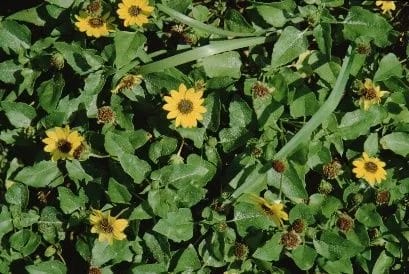Sunflowers (Helianthus annuus) are vibrant and iconic flowers known for their large, daisy-like blooms and cheerful appearance. This article provides a comprehensive overview of Sun bloom, covering their description, how to grow and care for them at home, common plant diseases with solutions, synonyms.
Description
Sun flower are annual plants native to North America and are widely cultivated for their striking appearance and edible seeds. They typically grow tall, with sturdy, hairy stems and large, bright yellow (sometimes orange or red) flower heads that can measure up to 12 inches in diameter. The flower heads are composed of many small florets arranged in a spiral pattern, encircled by distinctive bright yellow ray petals.
Key Characteristics:
- Scientific Name: Helianthus annuus
- Common Names: Sunflower
- Height: 3 to 12 feet tall
- Flower Size: Up to 12 inches in diameter
- Flower Color: Bright yellow (also orange or red varieties)
- Blooming Period: Summer to early fall
- Seeds: Edible seeds enclosed in a fibrous shell
How to Grow and Care for Healthy Sun bloom (Sunflowers) at Home
Light Requirements
Sun flower thrive in full sun and require at least 6-8 hours of direct sunlight daily. Choose a sunny spot in your garden or balcony where they can receive maximum sunlight throughout the day.
Soil
Plant sunflowers in well-draining, fertile soil with a pH level between 6.0 and 7.5. They can tolerate various soil types but prefer loamy soil enriched with organic matter. Ensure good drainage to prevent waterlogging, which can cause root rot.
Watering
Water Sun bloom regularly, especially during dry periods. Provide deep watering to encourage strong root development. However, avoid overwatering as it can lead to fungal diseases and root problems. Alwayes remember allow the soil to dry out slightly between waterings.
Fertilizing
Fertilize Sun bloom with a balanced fertilizer or compost at planting time to promote healthy growth. Avoid excessive nitrogen fertilizers, as they can result in lush foliage at the expense of Sun bloom production.
Support
Tall Sun bloomvarieties may need staking or support to prevent them from falling over in strong winds. Use bamboo stakes or trellises to provide support as the plants grow.

Plant Diseases and Solutions
Powdery Mildew
Symptoms: If there white powdery spots on Sun bloom leaves and stems.
Solution: Enhance air circulation around the plants by ensuring proper spacing. Prune and dispose of affected leaves, and consider applying a fungicide if the issue persists.
Downy Mildew
Symptoms: Yellow spots on the upper surface of leaves, followed by fuzzy gray growth on the undersides.
Solution: Remove infected leaves promptly and avoid overhead watering. Apply a fungicide labeled for control.
Botrytis Blight (Gray Mold)
Symptoms: Brown spots on petals, stems, and leaves, often covered in a grayish mold.
Solution: Remove affected plant parts and improve air circulation. Avoid overhead watering and apply fungicide preventatively.
Synonyms
Sunflowers are known by various synonyms, including:
- Helianthus
- Sun bloom
- Sunray
By following these guidelines, you can successfully grow and enjoy the vibrant beauty of Sun bloom in your home garden.

